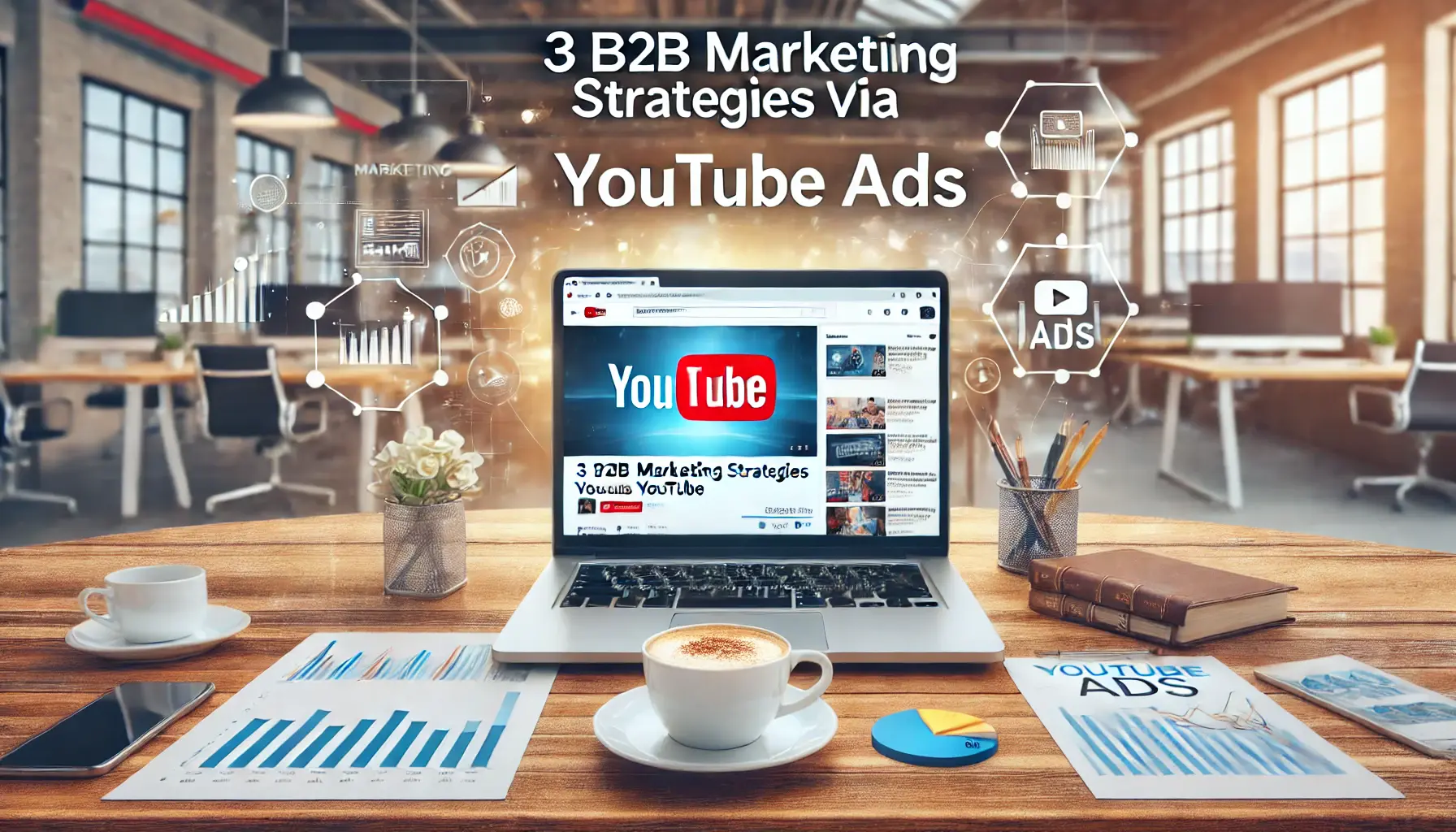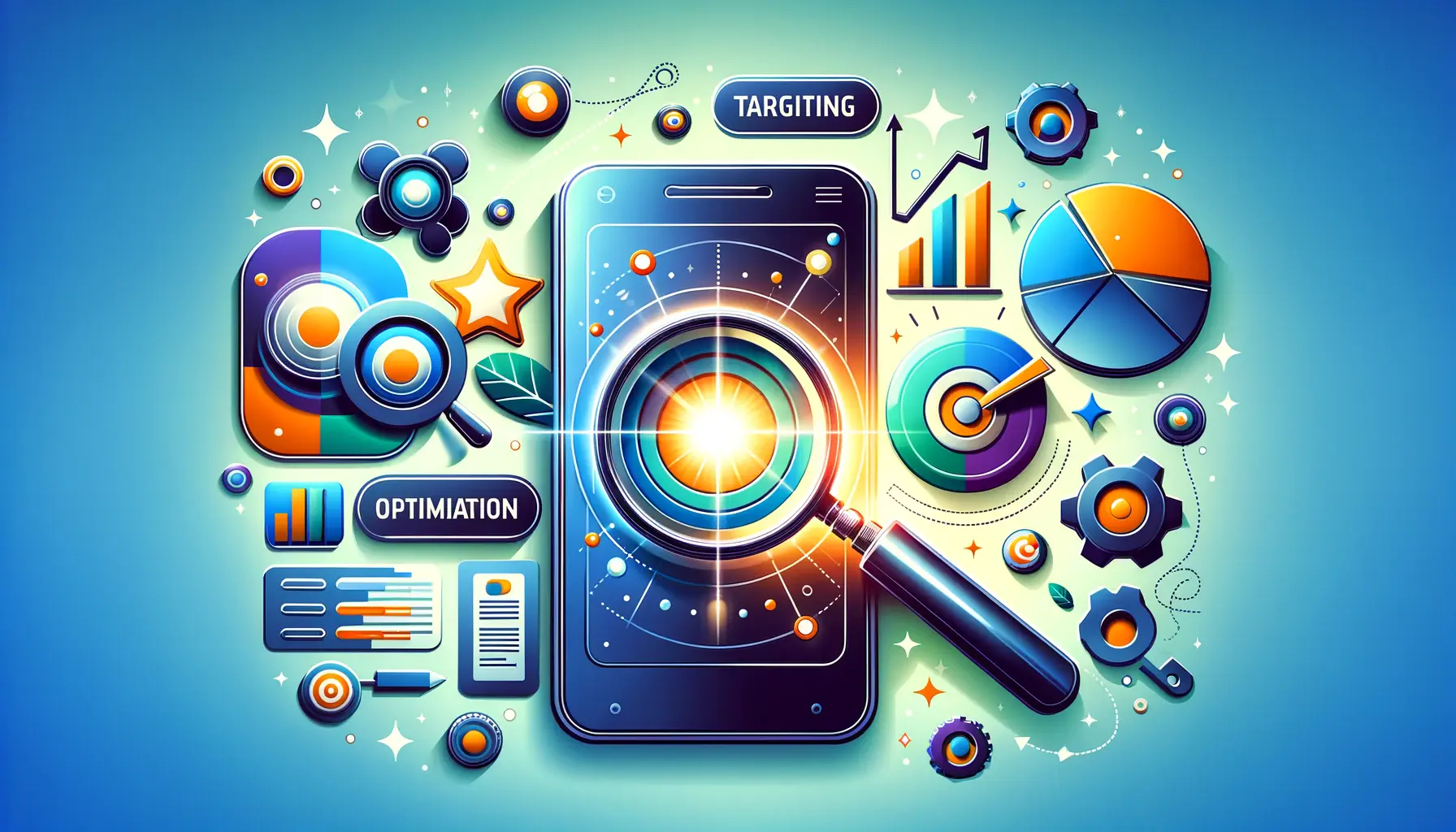In today’s digital era, effective brand advocacyThe process of customers, employees, or partners actively promoting and endorsing a brand. is the key for businesses aiming to thrive and expand their base.
Brand advocacy comprises customers, employees, or partners who wholeheartedly recommend your brand, making it more visible and credible.
One such strong platform for creating brand advocacy is LinkedIn, which is renowned for its professional networking capabilities.
With the correct use of LinkedIn Ads, you can convert connections into brand advocates with real passion, driving organic growthBusiness expansion achieved through natural means such as customer referrals, rather than paid advertising. and trust.
- Learning About Brand Advocacy on LinkedIn
- Strategies for Creating Brand Advocacy through LinkedIn Ads
- Maximizing LinkedIn Ad Features for Brand Advocacy
- Engaging and Growing Your LinkedIn Network
- Measuring the Impact of Brand Advocacy on LinkedIn
- The Strength of Brand Advocacy Through LinkedIn Ads
- Frequently Asked Questions About Brand Advocacy on LinkedIn
Learning About Brand Advocacy on LinkedIn
Prior to diving into tactics, it’s essential to understand what brand advocacy means in the LinkedIn context and why it’s critical to your company’s success.
Defining Brand Advocacy in the LinkedIn Context
Brand advocacy on LinkedIn refers to the active support and promotion of your brand by individuals who share their faith in your services or products.
These advocates willingly share positive experiences, endorse your product, and recommend it to their professional contacts.
Organic word-of-mouth provides authenticity to your brand and spreads it to influence circles.
The Need for Brand Advocacy for Your Business
Why is brand advocacy on LinkedIn essential?
Here are some compelling reasons:
- Greater Trust: Testimonials from real professionals weigh more than regular ads, building trust in prospective clients or business partners.
- Greater Visibility: Advocates sharing your content provide your brand with greater visibility, making it easier for a larger audience to discover you.
- Effective Marketing: Organic endorsements reduce the need for excessive paid advertising, optimizing your marketing budget.
- Community Building: Passionate supporters create a vibrant community around your brand, fostering loyalty and long-term relationships.
By understanding and leveraging brand advocacy on LinkedIn, you position your business to thrive in a competitive marketplace, using authentic voices to amplify your brand’s message.
Brand advocacy on LinkedIn thrives on authenticity. When professionals endorse your brand genuinely, their influence extends to a highly engaged audience.
Strategies for Creating Brand Advocacy through LinkedIn Ads
You can create brand advocacy through LinkedIn Ads with a deliberate effort that appeals to your target market.
By leveraging LinkedIn’s ad features, you can cultivate a group of loyal advocates who actively promote your company.
Creating Targeted and Relevant Content
You need to create content that resonates with your audience’s interests.
Here’s how you can do it:
- Know Your Audience: Conduct thorough research to identify your target audience’s needs and preferences.
- Provide Valuable Information: Share content that offers solutions, insights, or trends related to your industry.
- Use Visual Content: Incorporate images, videos, and infographics to make your content more interactive and engaging.
By focusing on these aspects, your content becomes more shareable, encouraging your audience to advocate for your brand.
Using LinkedIn Groups for Community Building
Membership in LinkedIn Groups allows you to interact with professionals interested in your niche.
To maximize LinkedIn Groups:
- Join Relevant Groups: Search for and join groups where your target audience is active.
- Engage Authentically: Participate in discussions by providing valuable insights without overtly promoting your brand.
- Post Relevant Content: Share content that aligns with the group’s interests and encourages meaningful interaction.
Active engagement in these groups helps build your brand’s credibility and generates a community of loyal supporters.
Enabling Employee Advocacy on LinkedIn
Your employees can be powerful brand advocates.
Encouraging them to share their experiences and company content can enhance your brand’s visibility.
Consider these strategies:
- Develop Content-Sharing Guidelines: Provide employees with clear and simple guidelines for sharing company content appropriately.
- Highlight Employee Success: Showcase employee success stories to humanize your brand and make it more relatable.
- Recognize and Reward Advocates: Identify and reward employees who actively promote your brand on LinkedIn.
Encouraging these behaviors humanizes your brand and builds trust within your network by allowing employees to share genuine experiences.
Applying these strategies with LinkedIn Ads not only enhances your brand’s visibility but also generates a loyal community of advocates who contribute to your brand’s growth.
Effective LinkedIn Ads should not just target customers but also create relationships that foster long-term brand loyalty.
Maximizing LinkedIn Ad Features for Brand Advocacy
To establish brand advocacy on LinkedIn, you should maximize the platform’s advanced ad features.
By utilizing precise targeting options, dynamic ad formats, and effective retargetingA digital marketing strategy that shows ads to users who have previously interacted with a brand’s content. strategies, you can optimize your brand’s visibility and engagement.
Utilizing Advanced Targeting Options
LinkedIn offers robust targeting capabilities to ensure your ads reach the most relevant audience.
Here’s how you can maximize these features:
- Demographic Targeting: Narrow your audience based on parameters such as location, age, gender, and language to ensure your content reaches the right demographic.
- Experience and Education Targeting: Target professionals based on job title, occupation, seniority, skills, degrees, and fields of study to align your ads with users’ professional expertise.
- Company Characteristics: Focus on specific industries, company sizes, or particular firms to tailor your messaging effectively.
- Matched Audiences: Utilize LinkedIn’s Matched Audiences feature to retarget website visitors, upload contact lists, or engage with key accounts, enhancing personalization.
By implementing these advanced targeting features, you ensure that your ads reach individuals most likely to become your brand advocates.
Exploring Dynamic Ad Formats
LinkedIn’s dynamic ad formats provide personalized advertising experiences that can significantly increase engagement:
- Dynamic Ads: These ads automatically personalize content for each user using data from their LinkedIn profile, such as their name, profile picture, or job title, creating a more engaging experience.
- Carousel Ads: Showcase multiple images or messages within a single ad unit, allowing you to tell a compelling brand story or highlight various products and services.
- Video Ads: Leverage the power of video to deliver your brand message in an engaging, shareable format that drives user interaction.
With these interactive ad formats, you create personalized experiences that encourage users to engage with and advocate for your brand.
Enabling Retargeting Strategies
Retargeting is a powerful strategy to re-engage users who have previously interacted with your brand:
- Website Retargeting: Re-engage LinkedIn members who have visited your site by displaying ads that encourage them to return and take desired actions.
- Lead Gen Form Retargeting: Target users who opened but didn’t complete your Lead Gen Forms, encouraging them to finalize the process.
- Video Ad Retargeting: Reconnect with users who viewed your video ads, prompting them with additional content or offers tailored to their interests.
Implementing these retargeting strategies keeps your brand top of mind, turning previous visitors into active advocates.
By leveraging LinkedIn’s advanced targeting options, dynamic ad formats, and retargeting strategies, you can enhance your brand advocacy efforts, building a community of engaged and committed supporters.
Using LinkedIn’s advanced targeting, dynamic ad formats, and retargeting strategies increases engagement and strengthens brand advocacy.
Engaging and Growing Your LinkedIn Network
Your strong brand advocacy on LinkedIn is built on consistent engagement and the growth of your professional network.
By continuously interacting with your audience and fostering genuine relationships, you can turn connections into devoted supporters of your brand.
Consistent Interaction with Your Audience
Regular interaction with your LinkedIn network helps maintain visibility and build trust.
Here’s how you can achieve this:
- Share Useful Content: Publish articles, industry tips, and news regularly to engage your audience and keep them informed.
- Participate in Discussions: Comment on posts, join LinkedIn Groups, and contribute to industry-related conversations.
- Respond Quickly: Reply to messages and comments promptly to show appreciation and encourage further interaction.
By being actively involved, you demonstrate commitment to your network, increasing the likelihood that they will recommend and advocate for your brand.
Personalized Interactions to Build Relationships
Personalizing interactions can significantly enhance your business relationships on LinkedIn.
Consider the following strategies:
- Personalized Messages: When connecting with new contacts or reaching out to existing ones, customize your messages to reflect genuine interest and intent.
- Acknowledge Milestones: Celebrate connections’ achievements such as promotions, work anniversaries, or completed projects to show appreciation for their success.
- Provide Assistance: Offer support or resources when necessary, demonstrating a willingness to help and adding value to your professional relationships.
These personalized gestures foster stronger connections and greater loyalty within your network.
Recognizing and Appreciating Active Advocates
Identifying and acknowledging individuals who actively promote your brand is essential for reinforcing brand advocacy.
Use the following approaches:
- Public Recognition: Highlight and acknowledge advocates publicly through posts or endorsements, showcasing their contributions to a wider audience.
- Exclusive Opportunities: Reward advocates with special access to events, premium content, or product previews as a token of appreciation for their support.
- Feedback Channels: Establish direct channels for advocates to provide input on products or services, making them feel valued and involved in your brand’s development.
Recognizing and rewarding your advocates not only strengthens their loyalty but also inspires others to support your brand.
By consistently engaging with your audience, personalizing interactions, and appreciating your advocates, you cultivate a strong network on LinkedIn that actively promotes and defends your brand, reinforcing your overall brand advocacy efforts.
Consistently engaging with your LinkedIn network turns passive followers into active brand advocates.
Measuring the Impact of Brand Advocacy on LinkedIn
To measure the success of your brand advocacy program on LinkedIn, it is essential to track key performance metrics that reflect your program’s effectiveness.
Monitoring these key performance indicators (KPIs) will help you assess reach, engagement, and the overall impact of your advocacy efforts.
Important Metrics to Monitor
Certain metrics provide valuable insights into your brand advocacy performance on LinkedIn:
- Reach and Amplification: Measure the number of unique users viewing advocacy posts to determine brand visibility. High reach indicates that content is being effectively shared within employee networks. Amplification reflects how often employee-created posts are reshared, offering insights into advocacy effectiveness.
- Engagement Metrics: Track likes, shares, comments, and click-through rates to evaluate content performance and audience interaction. High engagement signifies strong interest and validates content relevance.
- Employee Adoption Rate: Monitor the percentage of employees actively participating in the advocacy program. A higher adoption rate signifies strong internal engagement and increased reach for brand messaging.
- Share-Rate Analysis: Identify which content resonates most with employees by analyzing how frequently different content pieces are shared. This data helps refine content strategies for better engagement.
- Click-Through Rate (CTR): Assess the ratio of users clicking on a specific link compared to those who view the content. A higher CTR indicates content effectiveness in driving audience actions.
Tools and Techniques for Measurement
To effectively measure these metrics, consider the following methods:
- LinkedIn Analytics: Use LinkedIn’s built-in analytics tools to track post-performance, audience demographics, and engagement rates.
- Third-Party Platforms: Utilize specialized employee advocacy platforms to gain deeper insights and simplify data collection.
- Surveys and Feedback: Gather qualitative data from employees and audiences to evaluate program impact and identify areas for improvement.
By regularly monitoring these metrics and utilizing the right measurement tools, you can analyze the performance of your brand advocacy efforts on LinkedIn and make informed decisions to enhance your strategy.
Tracking key performance metrics like engagement, reach, and employee participation is essential for optimizing your brand advocacy strategy.
The Strength of Brand Advocacy Through LinkedIn Ads
Relying on the strength of brand advocacy through LinkedIn Ads is a business tactic focused on building trust, increasing reach, and fostering long-term relationships with consumers.
Through the advanced capabilities of LinkedIn, brands can convert professional networks into active advocates, solidifying their position in a competitive marketplace.
Important Takeaways from the Article
Throughout this guide, we have covered various strategies for creating and sustaining brand advocacy via LinkedIn Ads.
The key takeaways are:
- Understanding Brand Advocacy: Creating brand advocacy on LinkedIn requires trust, authenticity, and ongoing engagement from businesses and their stakeholders.
- Building Advocacy Through LinkedIn Ads: Effective targeting, high-quality content, and personalized ad experiences help brands connect with the right audience.
- Maximizing Reach and Engagement: Utilizing advanced ad formats, retargeting, and employee advocacy programs enhances visibility and audience interaction.
- Building and Engaging Your Network: Personalized engagement, active participation in conversations, and identifying influencers contribute to long-term brand loyalty.
- Assessing Effectiveness: Measuring engagement rates, reach, and employee participation ensures continuous optimization of advocacy efforts.
Launching a Strong Brand Advocacy Program
For businesses that aim to build a loyal base of supporters, developing a strong LinkedIn strategy is the most important step.
Here’s how you can implement these insights effectively:
- Define Your Advocacy Goals: Determine what success looks like for your brand advocacy program, whether it’s increased engagement, higher lead conversions, or an improved brand reputation.
- Empower Your Employees: Encourage employees to share brand messages by providing training, incentives, and streamlined content-sharing processes.
- Leverage Data for Continuous Improvement: Use LinkedIn analytics and feedback loops to track performance and make necessary adjustments to optimize advocacy efforts.
Final Thoughts
Building brand advocacy on LinkedIn is not an overnight task.
However, with patience, strategic ad placements, and genuine engagement, businesses can cultivate a network of dedicated supporters.
By implementing these strategies, your organization will achieve greater exposure, enhanced credibility, and long-term growth in the digital-first era.
Start leveraging LinkedIn Ads today to amplify your brand advocacy and create a community that truly embodies your brand’s message.
LinkedIn Ads are a powerful tool for building trust, increasing brand reach, and cultivating long-term business relationships.
Enjoyed the article? Let its author handle your social media ads. Visit our service page to get started!
Frequently Asked Questions About Brand Advocacy on LinkedIn
Understanding how to build effective brand advocacy on LinkedIn is essential, as it can significantly enhance your brand’s visibility and credibility.
Below are some common questions and concise answers to help you maximize LinkedIn for brand advocacy.
Brand advocacy on LinkedIn refers to individuals recommending your brand within their professional circles, gaining credibility, and expanding reach through authentic referrals.
LinkedIn Ads can drive brand advocacy by targeting specific audiences, delivering informative content, and encouraging engagement, which builds trust and drives word-of-mouth promotion by satisfied users.
Sponsored Content, Sponsored Messaging, and Dynamic AdsA type of LinkedIn ad that personalizes content for users based on their profile data. are the most effective LinkedIn ad formats for promoting brand advocacy through engaging and expanding your audience.
Measure success by tracking engagement rates, click-through rates, follower growth, and conversions to evaluate the effectiveness of your brand advocacy campaigns.
Yes, encouraging employees to share company content can amplify reach, enhance trust, and increase brand visibility through authentic endorsements.
High-quality, relevant content engages your audience, encourages sharing, and positions your brand as a thought leader, strengthening brand advocacy.
Encourage user-generated content by launching engaging campaigns, motivating followers to share their experiences, and recognizing their contributions to boost brand advocacy.
Key benefits include increased brand awareness, enhanced credibility, broader reach, and higher conversion rates through trusted recommendations.
Identify potential advocates by monitoring engagement, recognizing loyal followers, and analyzing interactions to find individuals who consistently support your brand.













